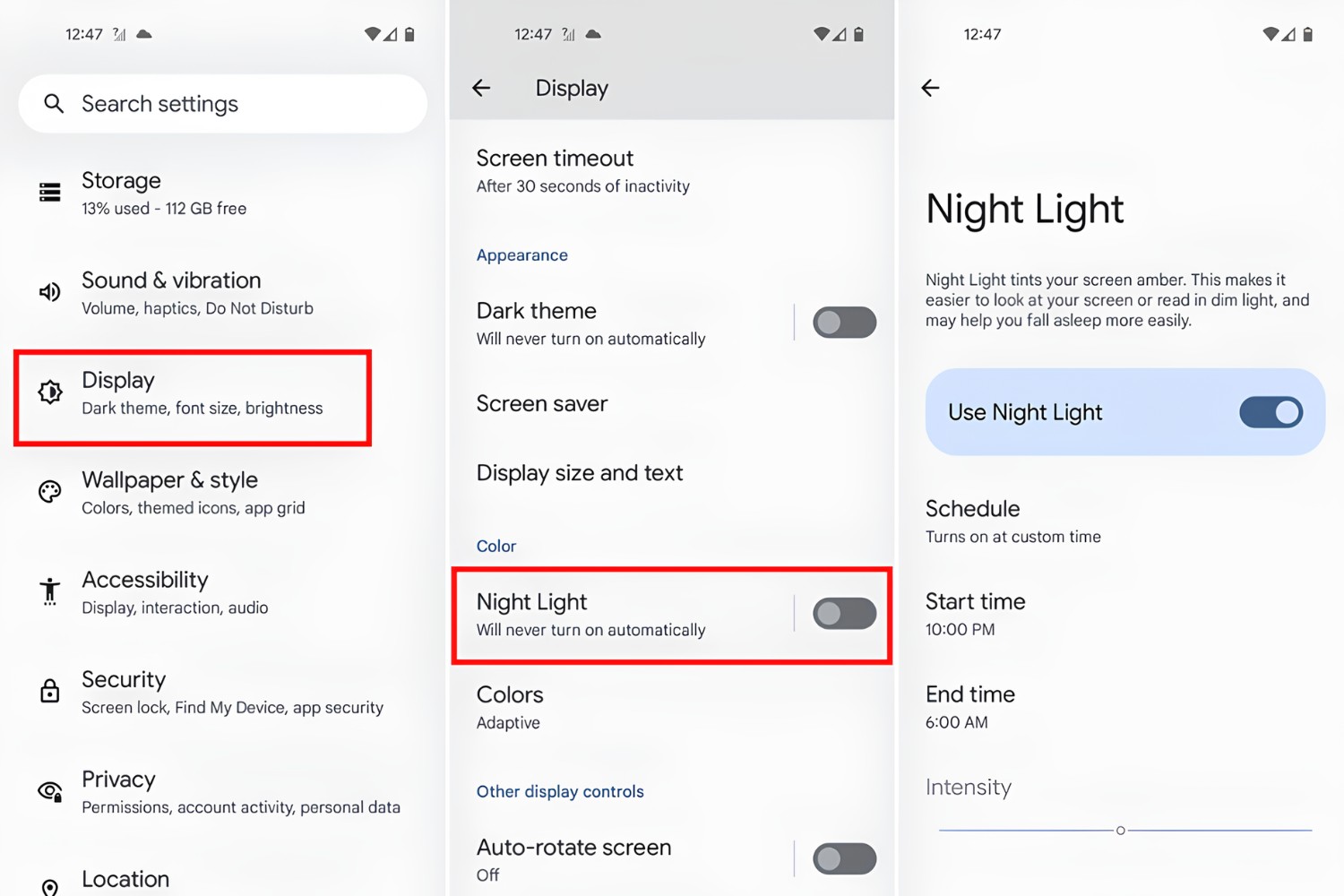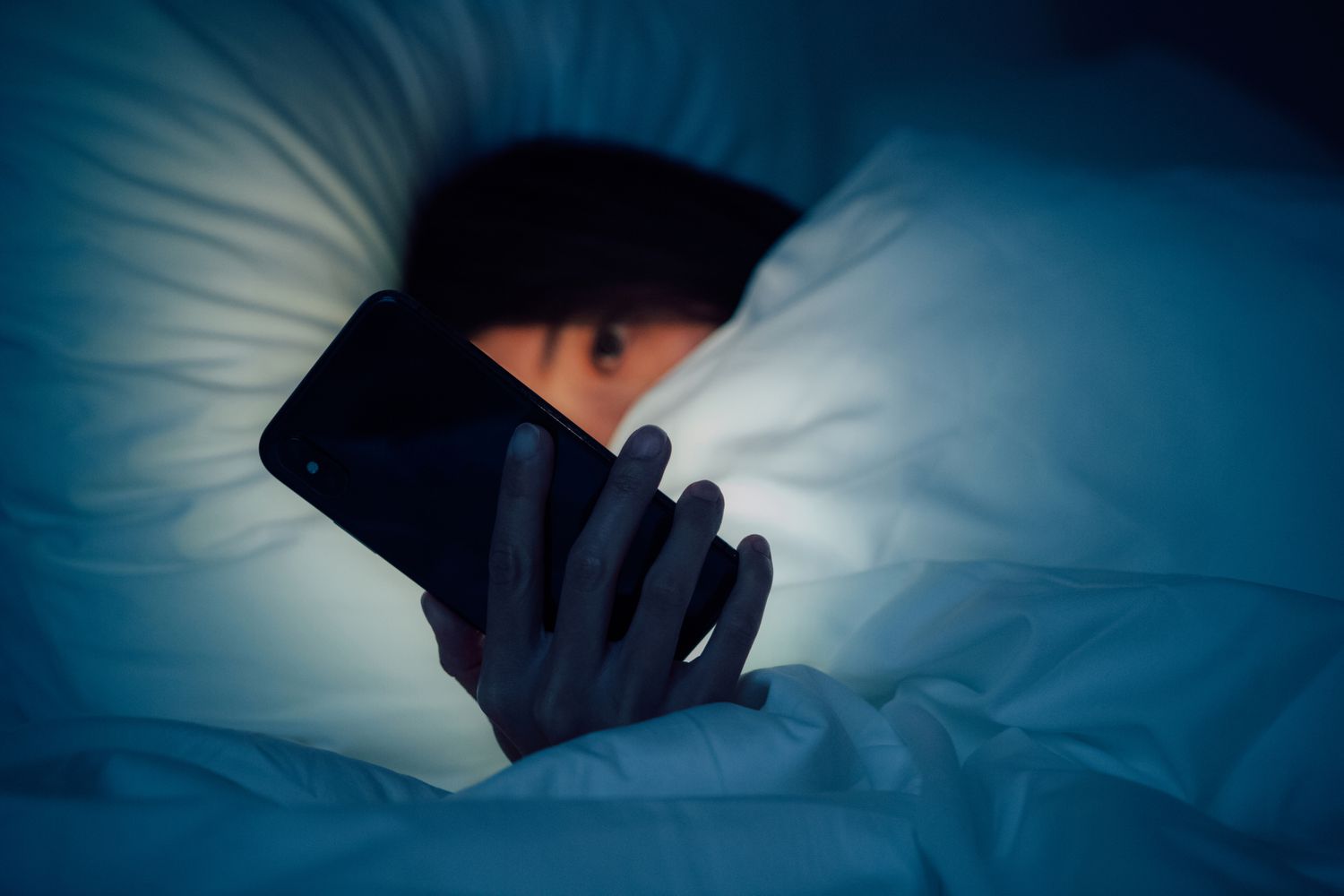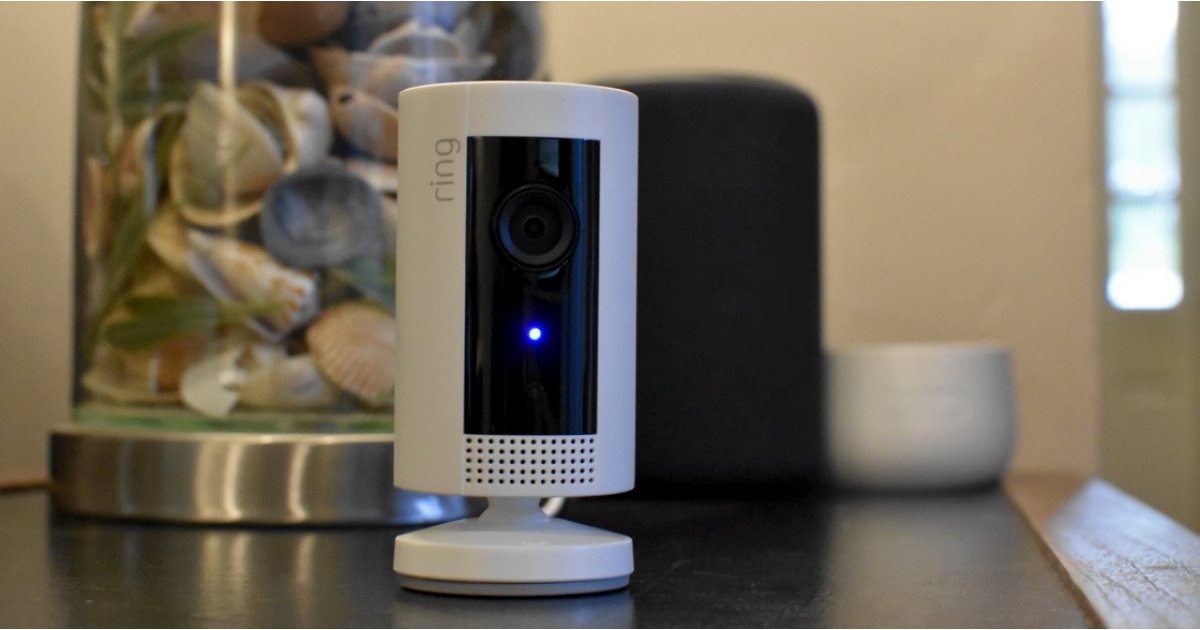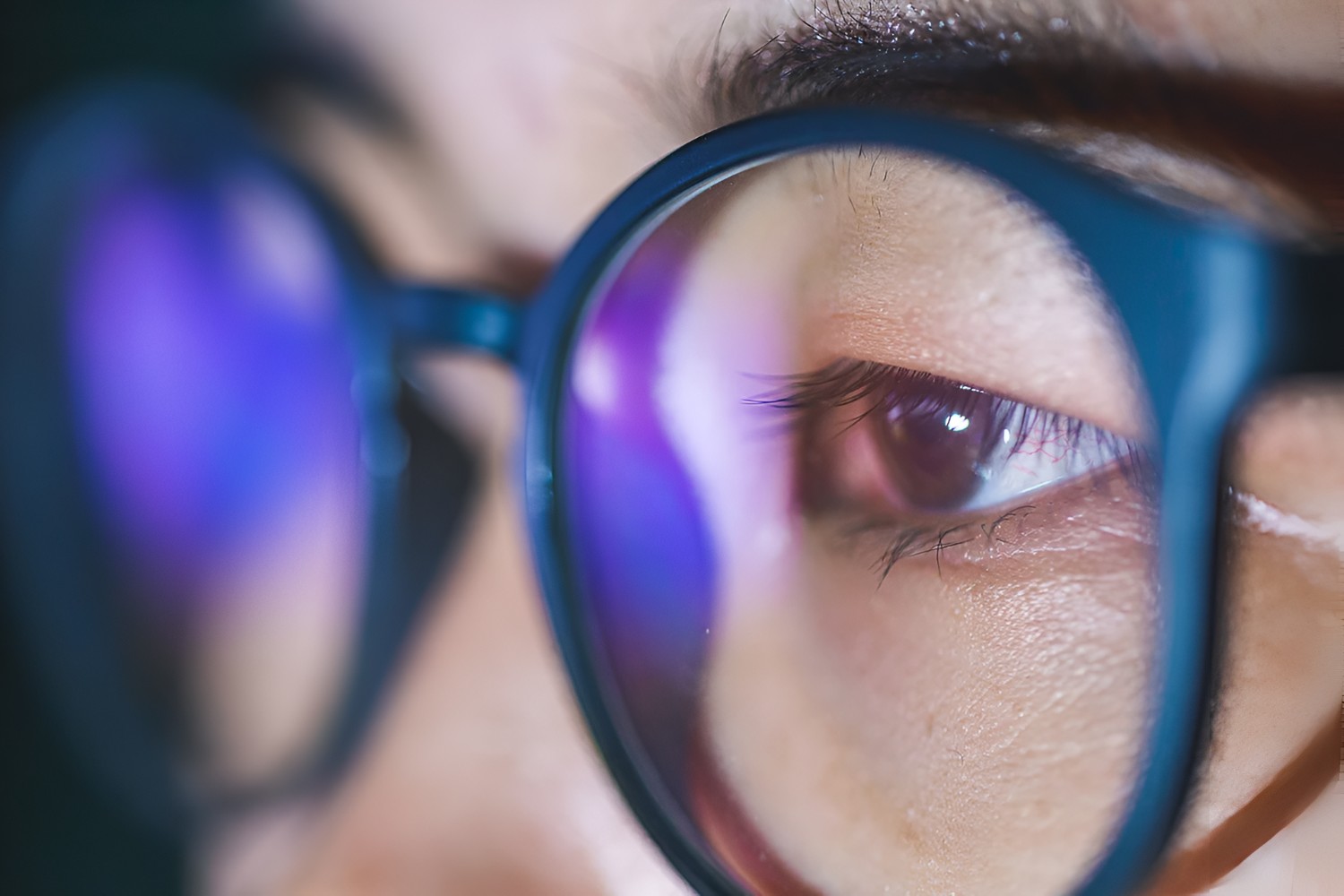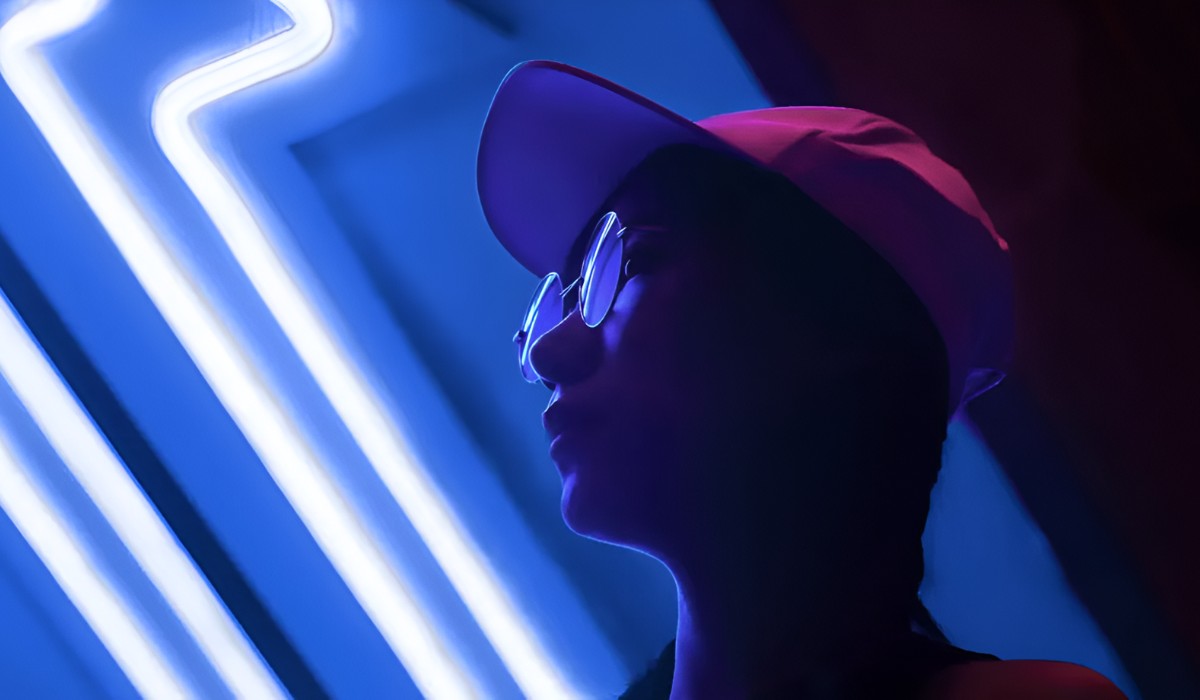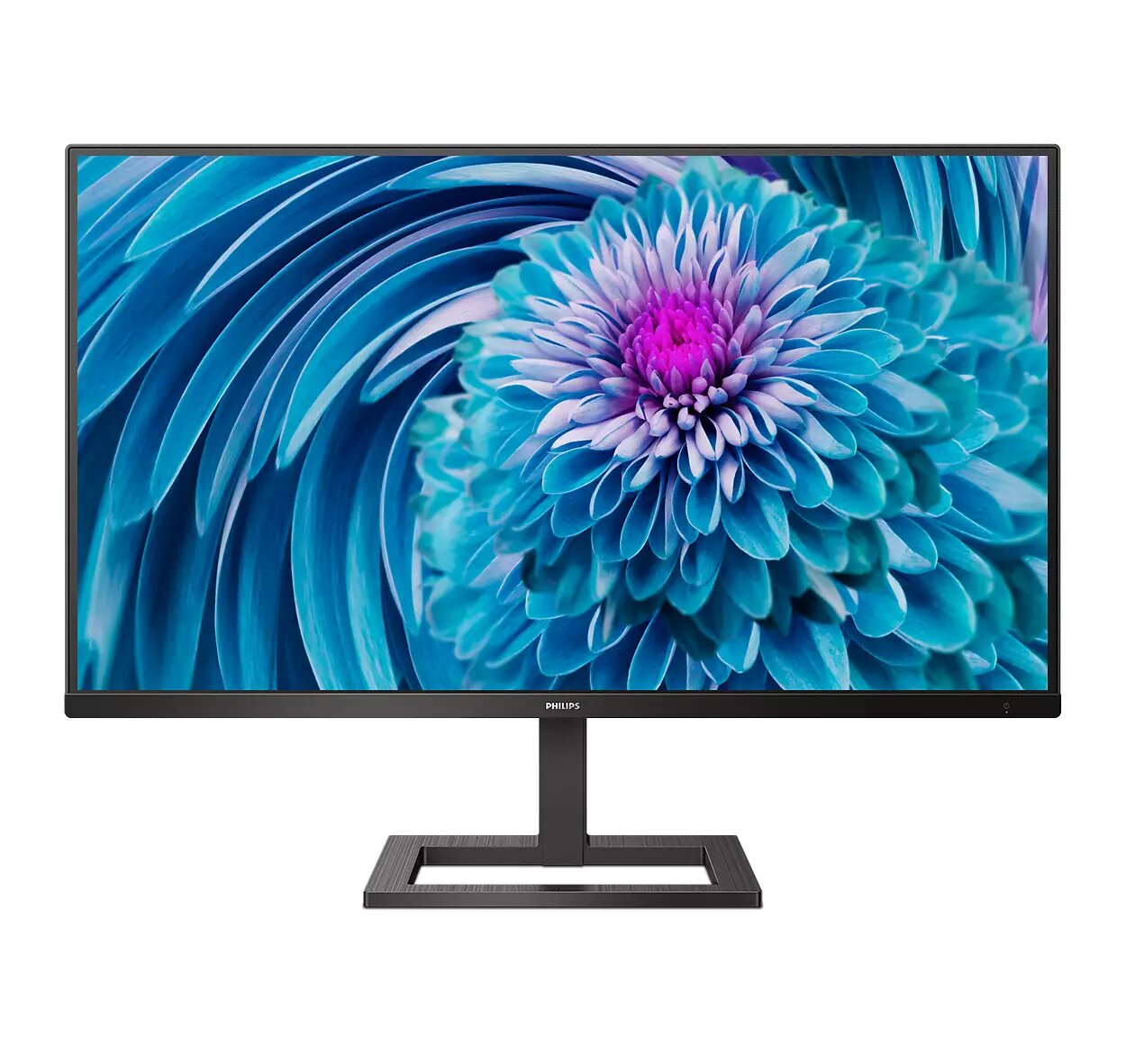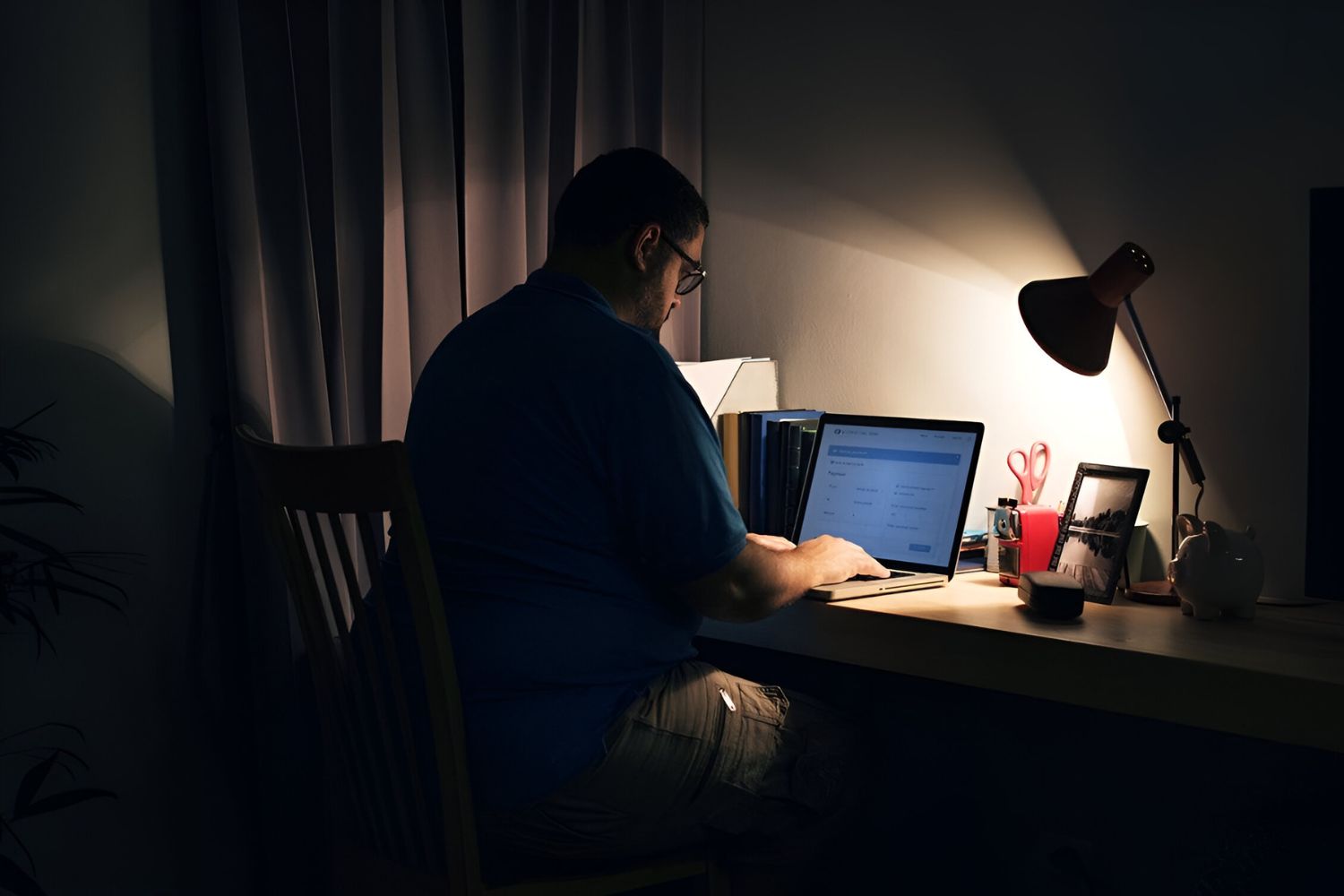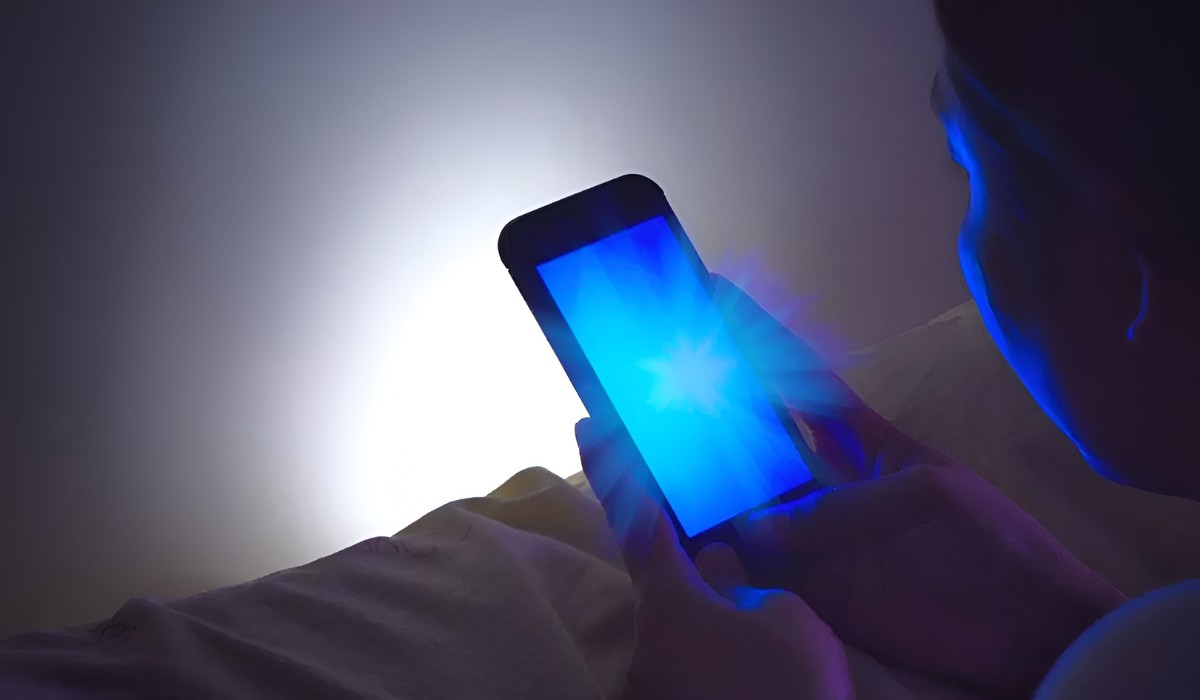Introduction
In today's digital age, the widespread use of electronic devices has become an integral part of our daily lives. Whether it's working on a computer, scrolling through social media on a smartphone, or binge-watching our favorite shows on a tablet, we are constantly exposed to screens emitting blue light. While these devices offer convenience and connectivity, they also pose potential risks to our visual health.
The prevalence of digital screens has raised concerns about the impact of blue light on our eyes. Blue light, a high-energy visible (HEV) light, is emitted by many modern electronic devices, including smartphones, computers, and LED televisions. Research has shown that overexposure to blue light can lead to digital eye strain, also known as computer vision syndrome. This condition encompasses a range of symptoms, such as dry eyes, headaches, blurred vision, and difficulty focusing, which can significantly impact our overall well-being and productivity.
As more individuals spend extended periods in front of screens for work, education, and leisure, the need to address the potential adverse effects of blue light has become increasingly pressing. It's essential to equip ourselves with the knowledge and strategies to mitigate the impact of prolonged screen time on our eyes and overall health.
This comprehensive guide aims to empower computer users with practical insights and actionable tips to minimize blue light exposure and alleviate digital eye strain. By understanding the effects of blue light, implementing display adjustments, utilizing blue light filters, and adopting other effective strategies, individuals can proactively safeguard their ocular health and enhance their digital experience.
With the right tools and knowledge at our disposal, we can navigate the digital landscape with greater comfort and confidence, ensuring that our eyes remain resilient and our well-being is prioritized in the face of pervasive screen usage. Let's delve into the world of blue light and discover how we can effectively protect our eyes from its potential repercussions.
Understanding Blue Light and Its Effects on the Eyes
Blue light, a high-energy visible (HEV) light, is a prominent component of the visible light spectrum. It is emitted by the sun and various artificial sources, including digital screens, LED lighting, and fluorescent bulbs. When we are exposed to blue light, particularly from digital devices, it can impact our eyes in several ways.
Effects on Circadian Rhythm
One of the primary concerns associated with blue light exposure is its potential to disrupt our circadian rhythm, also known as the body's internal clock. The eyes contain specialized cells that are sensitive to light, and when exposed to blue light, these cells send signals to the brain, influencing the production of melatonin, a hormone that regulates sleep-wake cycles. Prolonged exposure to blue light, especially in the evening, can suppress melatonin production, leading to difficulty falling asleep and disrupted sleep patterns.
Digital Eye Strain
Extended use of digital devices can result in digital eye strain, a condition characterized by a range of discomforting symptoms. When we focus on screens for extended periods, our eyes are subjected to increased levels of blue light. This can lead to eye fatigue, dryness, irritation, and blurred vision. Additionally, the constant adjustment of focus between different depths on the screen can contribute to visual discomfort and strain.
Potential Retinal Damage
Studies suggest that excessive exposure to blue light may pose risks to retinal health. Over time, blue light can penetrate the eye's natural filters and reach the retina, potentially causing damage to light-sensitive cells. While the long-term implications of this effect are still being studied, it underscores the importance of taking proactive measures to reduce blue light exposure, particularly during prolonged screen use.
Impact on Visual Performance
Blue light can also impact visual performance, particularly in tasks that require sustained attention and visual acuity. Excessive exposure to blue light may lead to reduced contrast sensitivity, making it more challenging to discern objects clearly, especially in low-light conditions. This can affect activities such as reading, driving, and performing detailed tasks, highlighting the need to manage blue light exposure for optimal visual comfort and performance.
Understanding the multifaceted effects of blue light on the eyes is crucial for implementing effective strategies to mitigate its potential impact. By gaining insight into the physiological and perceptual implications of blue light exposure, individuals can make informed choices to protect their visual well-being while engaging with digital devices.
Tips for Reducing Blue Light Exposure
1. Use the 20-20-20 Rule
When engaging in prolonged screen time, it's essential to incorporate regular breaks to alleviate eye strain. The 20-20-20 rule serves as a simple yet effective guideline: every 20 minutes, shift your focus to an object at least 20 feet away for at least 20 seconds. This practice can help reduce visual fatigue and prevent overexertion of the eyes when exposed to continuous blue light emission.
2. Opt for Proper Lighting
Creating an optimal environment for screen use involves considering ambient lighting. Positioning the screen to minimize glare and adjusting the surrounding lighting to reduce contrast can contribute to a more comfortable viewing experience. By ensuring adequate illumination without excessive brightness, the eyes can adapt more effectively to screen content, thereby mitigating the strain induced by blue light exposure.
3. Prioritize Screen Distance and Positioning
Maintaining an appropriate distance from the screen is crucial for minimizing direct exposure to blue light. Position the screen at a comfortable distance, typically an arm's length away, and ensure that the screen is slightly below eye level. This positioning facilitates a more natural and relaxed gaze, reducing the strain on the eyes caused by prolonged exposure to blue light.
4. Incorporate Screen Time Limits
Setting boundaries on screen time, especially before bedtime, can help regulate blue light exposure and promote healthier sleep patterns. Establishing designated periods for screen use and implementing digital curfews can limit prolonged exposure to blue light, allowing the eyes to rest and recover before sleep. This practice can contribute to improved sleep quality and overall visual well-being.
5. Explore Blue Light Filtering Eyewear
Investing in blue light filtering eyewear, such as computer glasses with specialized lenses, can provide an additional layer of protection against excessive blue light exposure. These glasses are designed to selectively filter out a portion of blue light emitted by digital screens, reducing the strain on the eyes and potentially alleviating symptoms of digital eye strain.
6. Incorporate Anti-Glare Screen Protectors
Applying anti-glare screen protectors to electronic devices can help minimize reflections and glare, thereby reducing the intensity of blue light reaching the eyes. These protectors serve as a practical solution to mitigate the adverse effects of screen glare and enhance visual comfort during extended screen use, contributing to a more eye-friendly digital experience.
7. Create Blue Light-Free Zones
Designating specific areas or times as "blue light-free zones" within living spaces can encourage a healthier balance between screen usage and moments of reduced blue light exposure. By integrating periods of screen-free activities and relaxation, individuals can mitigate the cumulative effects of blue light and promote overall visual and mental well-being.
Implementing these tips for reducing blue light exposure can empower individuals to proactively manage their screen time and prioritize visual comfort. By incorporating these strategies into daily routines, individuals can cultivate a more sustainable and eye-friendly approach to digital device usage, ultimately safeguarding their visual health in the face of pervasive blue light exposure.
Adjusting Display Settings for Reduced Blue Light
Modern digital devices, including computers, smartphones, and tablets, offer built-in features that allow users to adjust display settings to mitigate the impact of blue light on the eyes. By leveraging these settings, individuals can optimize their screen experience for reduced blue light exposure and enhanced visual comfort.
1. Night Mode or Blue Light Filter
Many devices now incorporate a "Night Mode" or "Blue Light Filter" feature, which enables users to reduce the emission of blue light during evening hours or in low-light environments. Activating this setting imparts a warmer, more amber-toned hue to the display, effectively diminishing the intensity of blue light. By scheduling this feature to automatically activate during the evening, users can minimize blue light exposure without compromising the legibility of on-screen content.
2. Display Brightness Adjustment
Adjusting the brightness of the display is a fundamental yet impactful method for managing blue light exposure. Lowering the screen brightness not only reduces the overall intensity of light emitted, including blue light, but also promotes a more comfortable viewing experience, particularly in dimly lit settings. By customizing the brightness level to align with ambient lighting conditions, users can optimize visual comfort while curbing excessive blue light emission.
3. Color Temperature Control
Some devices offer the option to control the color temperature of the display, allowing users to fine-tune the balance of warm and cool tones. By shifting the color temperature towards warmer tones, the proportion of blue light emitted can be effectively diminished, resulting in a gentler visual experience. This adjustment can be particularly beneficial during evening or nighttime usage, aiding in the reduction of blue light exposure without compromising color accuracy.
4. Accessibility Features
Accessibility settings on digital devices often include options for modifying display contrast, color filters, and text size, catering to diverse visual preferences and needs. Leveraging these features can contribute to a more personalized and comfortable viewing experience, allowing users to tailor display settings to reduce the strain induced by blue light while enhancing overall visual clarity and readability.
By harnessing the diverse array of display settings offered by modern devices, individuals can proactively mitigate the impact of blue light on their visual well-being. These adjustments empower users to create a more eye-friendly digital environment, promoting sustained comfort and minimizing the potential adverse effects of prolonged screen time on the eyes.
Incorporating these strategies into daily device usage can significantly contribute to a more sustainable and visually accommodating digital experience, allowing individuals to navigate the digital landscape with greater ease and comfort, while safeguarding their ocular health from the pervasive influence of blue light.
Using Blue Light Filters and Screen Protectors
In the realm of digital device usage, the integration of blue light filters and screen protectors has emerged as a proactive approach to mitigate the potential adverse effects of prolonged blue light exposure on visual health. These specialized tools offer a targeted solution to reduce the intensity of blue light emitted by screens, thereby promoting enhanced visual comfort and minimizing the risk of digital eye strain.
Blue Light Filtering Applications
Dedicated blue light filtering applications and software have gained prominence as valuable assets in the quest to manage blue light exposure. These applications are designed to modify the color temperature and spectral composition of the display, effectively attenuating the emission of blue light without compromising the overall visual quality. By integrating these applications into digital devices, users can tailor their screen experience to align with their specific comfort and protection needs, particularly during extended periods of screen engagement.
Screen Protectors with Anti-Blue Light Properties
The advent of screen protectors with anti-blue light properties has ushered in a new dimension of visual safeguarding for electronic devices. These screen protectors are engineered to selectively filter out a portion of blue light emitted by screens, serving as a physical barrier against excessive blue light exposure. By applying these protectors to smartphones, tablets, and other digital screens, individuals can fortify their devices with an additional layer of defense against the potential ocular repercussions of prolonged screen time.
Blue Light Filtering Eyewear
In addition to software-based solutions and screen protectors, the utilization of blue light filtering eyewear has garnered attention as a proactive measure to combat the impact of blue light on visual comfort. Specialized eyewear, such as computer glasses with blue light filtering lenses, is designed to selectively block or absorb a portion of blue light, reducing the strain on the eyes during screen use. By incorporating these eyewear options into their daily routines, individuals can benefit from enhanced visual comfort and reduced susceptibility to digital eye strain, particularly in environments characterized by prolonged screen exposure.
Holistic Protection and Visual Comfort
The integration of blue light filters and screen protectors represents a holistic approach to safeguarding visual well-being in the digital age. By leveraging these tools, individuals can proactively address the pervasive influence of blue light on ocular health, fostering a more sustainable and comfortable digital experience. Furthermore, the combination of software-based filters, physical screen protectors, and specialized eyewear empowers users to tailor their visual environment to align with their unique comfort and protection requirements, ultimately promoting a balanced and eye-friendly interaction with digital devices.
Incorporating blue light filters, screen protectors, and specialized eyewear into daily device usage can significantly contribute to a more sustainable and visually accommodating digital experience. These tools serve as essential allies in the quest to minimize the impact of blue light on visual comfort, empowering individuals to navigate the digital landscape with greater ease and confidence, while prioritizing the well-being of their eyes amidst the prevalence of digital screens.
Other Strategies for Minimizing Eye Strain
In addition to adjusting display settings and utilizing blue light filters, several supplementary strategies can effectively minimize eye strain associated with prolonged screen usage. These holistic approaches encompass ergonomic considerations, lifestyle adjustments, and proactive eye care practices, contributing to a comprehensive framework for promoting visual comfort and ocular health in the digital era.
Ergonomic Optimization
Ergonomic optimization of workstations and digital device setups plays a pivotal role in mitigating eye strain and promoting overall physical well-being. Positioning the screen at an appropriate viewing angle and height, ensuring ergonomic seating arrangements, and incorporating supportive accessories such as adjustable monitor stands and ergonomic chairs can significantly reduce the strain on the eyes, neck, and shoulders during extended screen engagement. By fostering a comfortable and posture-conscious environment, individuals can minimize the physical burden associated with prolonged screen time, thereby reducing the risk of digital eye strain.
Regular Eye Exercises
Integrating regular eye exercises into daily routines can provide much-needed relief to the eyes and alleviate the strain induced by prolonged screen usage. Simple exercises such as eye rolls, focusing on distant objects, and blinking exercises can help maintain ocular flexibility and reduce the accumulation of visual fatigue. These exercises serve as brief yet impactful interludes during screen time, allowing the eyes to rest, rehydrate, and recalibrate, ultimately contributing to sustained visual comfort and resilience.
Adequate Hydration and Nutrition
Maintaining adequate hydration and a balanced diet rich in eye-friendly nutrients can bolster ocular health and resilience against the effects of blue light exposure. Proper hydration supports tear production, reducing the risk of dry eyes, while nutrients such as omega-3 fatty acids, vitamin C, and antioxidants contribute to the overall health of the eyes. By prioritizing hydration and nutritional intake, individuals can fortify their eyes against the potential impact of prolonged screen usage, fostering a foundation of ocular well-being in the face of pervasive digital engagement.
Regular Eye Examinations
Scheduling regular eye examinations with qualified optometrists or ophthalmologists is essential for monitoring visual health and addressing any underlying concerns related to prolonged screen usage. Comprehensive eye exams can detect early signs of visual strain, monitor ocular health, and facilitate the prescription of customized solutions such as specialized eyewear or vision correction, tailored to individual needs. By proactively seeking professional guidance, individuals can address potential visual challenges and optimize their ocular well-being in the context of prevalent digital screen exposure.
By integrating these supplementary strategies into daily routines, individuals can cultivate a more holistic and proactive approach to minimizing eye strain and promoting sustained visual comfort amidst the ubiquity of digital screens. These multifaceted strategies, when combined with display adjustments and specialized tools, form a comprehensive framework for prioritizing ocular well-being and empowering individuals to navigate the digital landscape with greater comfort and resilience.
Conclusion
In the fast-paced digital landscape of today, where screens have become ubiquitous in both professional and personal spheres, prioritizing visual health is paramount. The pervasive emission of blue light from electronic devices poses potential risks to ocular well-being, encompassing digital eye strain, disrupted sleep patterns, and concerns regarding retinal health. However, armed with knowledge and proactive strategies, individuals can effectively mitigate the impact of blue light and cultivate a sustainable and eye-friendly digital experience.
By understanding the multifaceted effects of blue light on the eyes, individuals can make informed choices to protect their visual well-being while engaging with digital devices. Implementing practical tips for reducing blue light exposure, such as incorporating regular breaks, optimizing lighting conditions, and setting screen time limits, empowers individuals to proactively manage their screen time and prioritize visual comfort.
Furthermore, leveraging the diverse array of display settings offered by modern devices, such as night mode, brightness adjustment, and color temperature control, enables users to optimize their screen experience for reduced blue light exposure and enhanced visual comfort. The integration of blue light filters, screen protectors, and specialized eyewear represents a holistic approach to safeguarding visual well-being in the digital age, fostering a balanced and eye-friendly interaction with digital devices.
In addition to these proactive measures, incorporating ergonomic optimization, regular eye exercises, adequate hydration, nutrition, and regular eye examinations into daily routines forms a comprehensive framework for promoting sustained visual comfort and resilience. These supplementary strategies, when combined with display adjustments and specialized tools, empower individuals to navigate the digital landscape with greater ease and confidence, while safeguarding their ocular health from the pervasive influence of blue light.
Ultimately, the quest to minimize eye strain and promote visual comfort amidst prolonged screen usage requires a multifaceted approach that encompasses knowledge, practical strategies, and proactive eye care practices. By embracing these principles, individuals can cultivate a more sustainable and visually accommodating digital experience, ensuring that their eyes remain resilient and their well-being is prioritized in the face of pervasive screen usage. With the right tools and knowledge at our disposal, we can navigate the digital landscape with greater comfort and confidence, safeguarding our visual health in the midst of pervasive blue light exposure.









